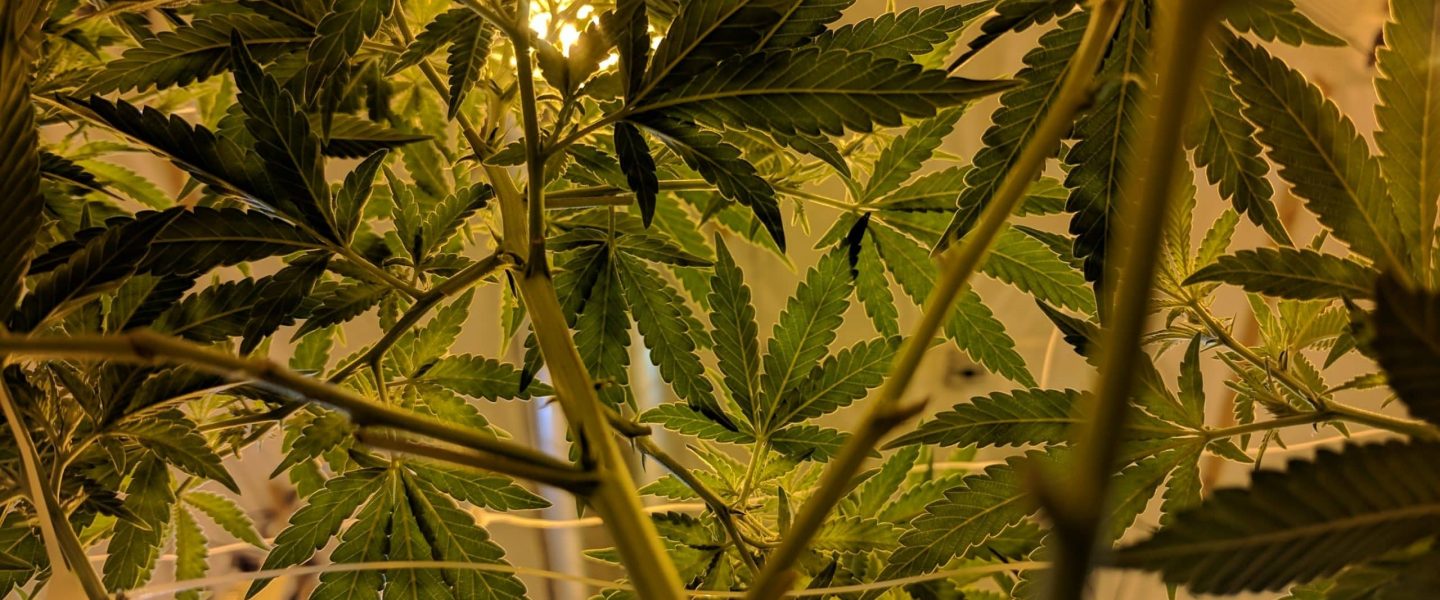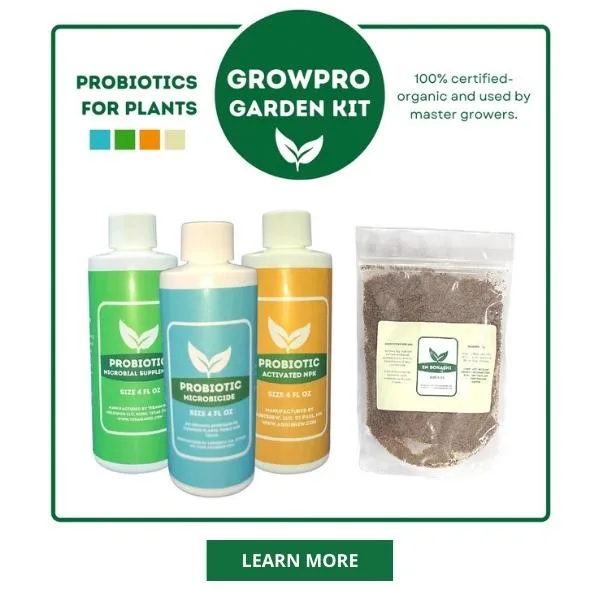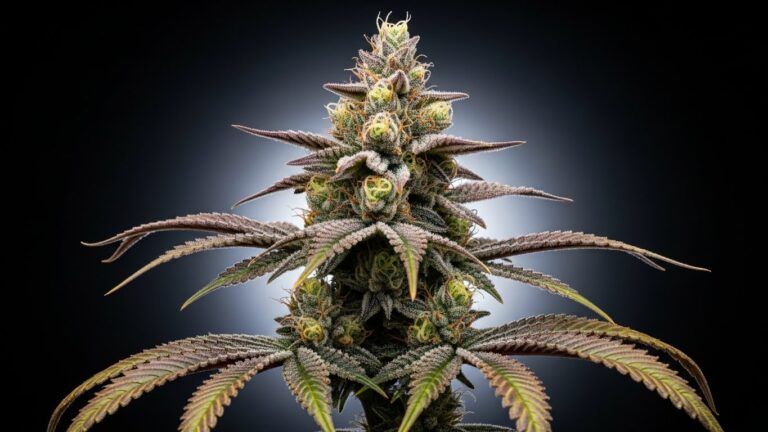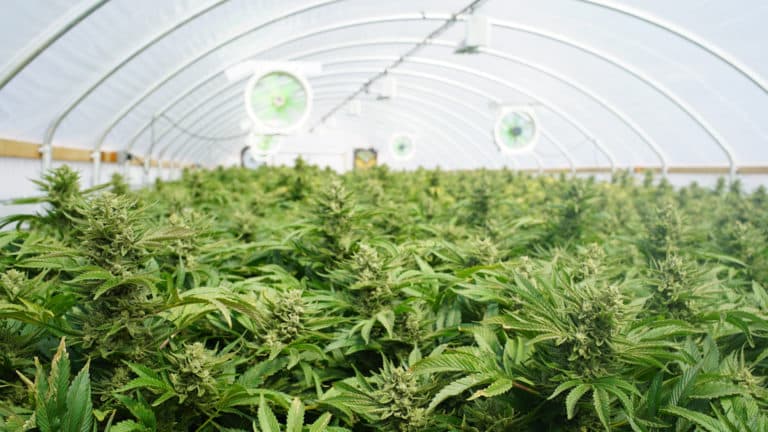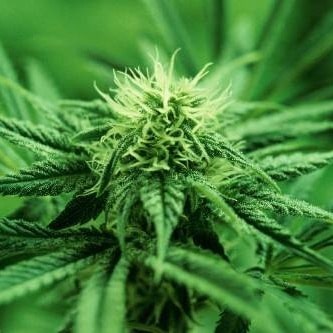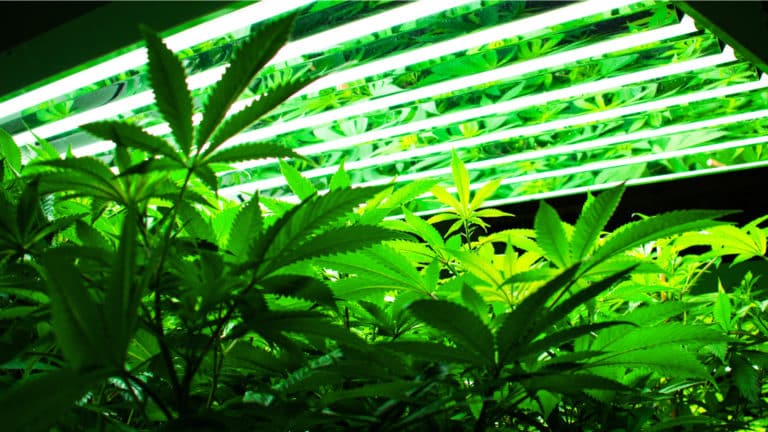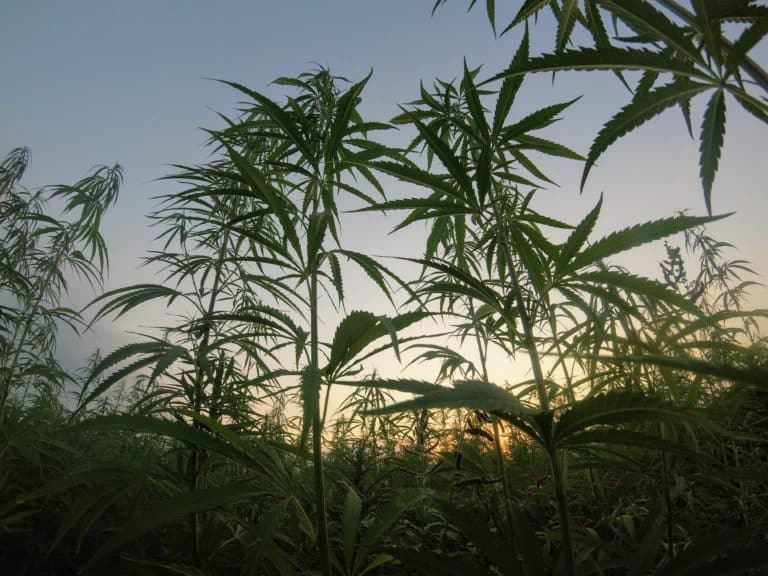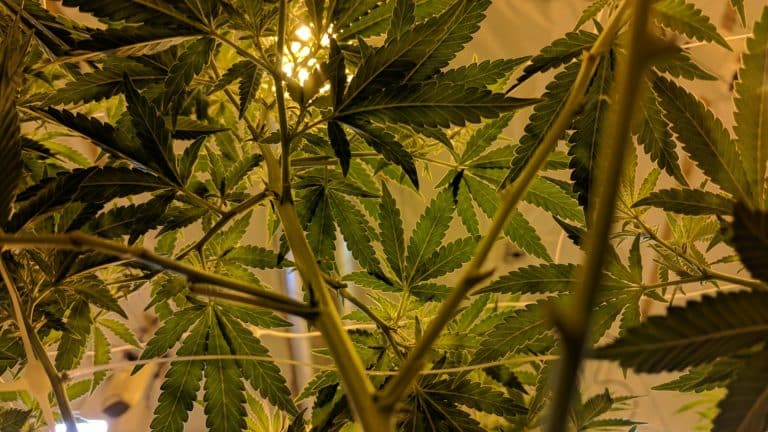We are fortunate enough to live in an incredible time where cultivating cannabis is legal in many states. Some states allow personal cultivation recreationally, while other states designate it for medical purposes only. The concept of ordinary citizens growing their own medicine, however, is nothing short of revolutionary. If your state allows personal marijuana cultivation of any kind, I encourage you to research the law and take advantage of this unique opportunity to develop your ganja green thumb by reading our indoor marijuana growing guide.
Growing Marijuana Indoors for Beginners
For beginners, growing weed indoors can be intimidating. There are a multitude of considerations: lighting, watering, fertilizer, climate control, pruning, cost, and the list goes on. However, growing pot indoors can be executed by anyone with the right knowledge and careful observations based on a trial-and-error process. We’ll provide this knowledge by breaking down the marijuana cultivation process into manageable steps, providing our own version of growing weed for dummies.
How Do I Start a Small Indoor Grow Op?
Start your small indoor grow operation by identifying your cannabis flower yield goals. Then, create an indoor grow equipment list that correlates with these goals. You’ll need fans, lighting, climate controls, soil or other grow medium, plant containers, fertilizer nutrients, and a watering system. You’ll also want to choose a cool, dry area with easy access to outdoor fresh air. Consider purchasing an indoor grow tent that could be easily placed in a spare bedroom, basement, or closet.
Steps to Growing Weed Plants Indoors for Beginners
- Identify a cultivation area.
- Select proper grow lights.
- Provide proper ventilation.
- Enable climate controls and monitors
- Choose your cannabis grow medium.
- Acquire containers for your weed plants.
- Provide nutrients for your weed plants.
- Water your weed plants.
How to Grow Marijuana Indoors the Best Way
Cultivation Area
For beginners growing weed, the first task is to identify a suitable cultivation area. This doesn’t require an entire room or even a typical room at all. You can place an indoor grow tent in the corner of a basement, or you could utilize a closet or spare bedroom. However, make sure to carefully read your state’s personal cultivation laws, as some states require cultivation areas to be secured in a locked space.
It’s important to initially consider the size of your cultivation area. Determine the size of your grow, and remember to reserve space that allows you to maintain your marijuana plants with physical modifications– you’ll need a little elbow room. A small space is cheaper and easier to maintain, but you might have lofty goals of producing large flower yields.
Proper environmental conditions are crucial for your grow space. Make sure there is appropriate light, humidity, and temperature. You don’t want any light beaming on your marijuana plants other than the specific grow lights you install. Ideally, you want to choose a cool, dry area with easy access to outdoor fresh air.
Grow Lights
Doing a deep dive into grow lights can be confusing and convoluted, but this is growing marijuana for dummies, right? Here’s a basic summary to easily apply to your specific cultivation needs:
- HID (high-intensity discharge) lights– An industry standard that costs more than fluorescent lights but produces more light per unit of electricity. While not as efficient as LED lighting, they cost significantly less. HID lights emit excessive heat, so proper ventilation and cooling, including ducting and fans, are required to prevent burning your marijuana plants.
- Fluorescent lights– These lights are popular for small-scale growers because they’re easy to set up and don’t require a cooling system. However, they are rather inefficient and require significant space.
- LED lights– These lights have recently surged in popularity. Although LED lights are very expensive initially, they last longer, use less electricity, create less heat, and provide a more complete light spectrum compared to other grow lights.
- Induction lights– Though they can be costly and difficult to find, as they rely on old technology, they are more efficient and longer-lasting than fluorescent bulbs.
Air and Ventilation
Fresh air, appropriate temperature, and proper ventilation will provide the right environmental conditions for your marijuana plants to thrive. Temperatures should remain between 70 and 85° F when the lights are on and between 58 and 70° F when they are off. You’ll also need a constant stream of air circulating throughout your cultivation area which can be accomplished by placing an exhaust fan near the ceiling and a filtered air inlet near the floor.
I would also suggest providing a steady, light breeze to strengthen your marijuana plants’ stems and discourage mold and pests. Place 1-2 circulating fans somewhere in your cultivation area, but don’t put them too close to your plants as it could cause windburn.
Climate Controls and Monitors
Large scale cultivators use expensive climate control systems to automate proper environmental conditions, but such sophisticated equipment is not necessarily required. All the beginning cultivator needs for climate control is a simple 24-hour timer for lighting and an adjustable thermostat for the exhaust fan.
Every beginner’s guide for growing weed should stress the importance of the light/dark cycle. When your cannabis plants are in the vegetative growth stage, they should receive 18 hours of light per 24 hours; with the flowering growth stage, however, they should receive 12 hours of light per 24 hours. A timer is essential because you’ll need your lights to turn on and off at the same times each day. If this strict lighting schedule isn’t followed, you risk stressing your plants and inhibiting growth.
Grow Medium
The two most popular grow mediums are soil and soilless (hydroponics). Obviously, soil is the most traditional grow medium, and it allows for more mistakes compared to hydroponics, making it a solid choice for beginning cultivators. You can purchase pre-fertilized soil or create your own by combining worm castings, bat guano, and other ingredients with the soil. Be sure to avoid the rookie mistake of using Miracle-Gro, as it is absolutely unsuitable for growing high-quality cannabis.
While hydroponic systems are currently surging in popularity, I would avoid such a system for your first or second grow. These systems can be sophisticated and expensive, and they require a strict degree of precision because your marijuana plants will react quickly to overfeeding or underfeeding. Compared to soil, your plants are also more susceptible to nutrient burn or lockout.
Containers
Hydroponic system containers are somewhat advanced and more expensive than other methods. There are cheaper options for novice cultivators using soil such as perforated plastic bags, cloth bags, smart pots, and 5-gallon buckets. Regardless of your container choice, make sure there are holes for proper drainage to prevent oversaturation in your containers.
Nutrients
Unlike growing more common crops, growing cannabis requires more nutrients, or fertilizer. You’ll need the macronutrients: nitrogen (N), Phosphorus (P), and Potassium (K); and the micronutrients: calcium, magnesium, iron, and copper.
You can purchase pre-fertilized organic soil mix or macronutrients that must be mixed in different combinations to accommodate the growth stage of your cannabis plants. Most macronutrients are sold in a two-part liquid. You’ll need two bottles (part A and part B) for vegetative growth, two bottles for flowering, and a bottle of micronutrients. Mix these solutions with water as directed by the manufacturer label, but start at half strength as your plants can easily suffer nutrient burn from excess nutrients.
You should also purchase a pH meter to level the pH balance in your water after applying nutrients. Cannabis requires a pH between 6 and 7 in soil, and staying within this range is important to ensure all your plants are receiving adequate amounts of nutrients.
Learn how EM-1 can help enhance your yields within weeks.
Watering
The most common mistake of the beginning cultivator is overwatering. If you water your marijuana plants too much, you risk the development of fungal root disease or other types of bud rot which can be devastating to your entire crop. The frequency with which you should water your plants depends on the growth medium, ambient temperature, and the size of your plants. There is no universal formula for watering, but many experienced cultivators recommend watering cannabis plants until the topsoil feels dry through an inch deep.
Anyone can learn how to grow pot indoors. Get some seeds in the ground, and embrace the cultivation process. With a little grit and determination combined with the right information, you’ll be harvesting bountiful buds from your favorite strains before you can say, “bong hit.”
Additional Readings on Cultivation
The Weed Blog is a comprehensive source to find reviews of specific top strains of cannabis and online news resources regarding the legalization of marijuana. We are committed to helping you find valuable information about cannabis on our website. With marijuana law constantly changing, learn about the latest legislation from our related articles and what you can do to help. Otherwise, consider these other top tier articles regarding cannabis cultivation:
How to Organize the Growing Process When Growing Marijuana


